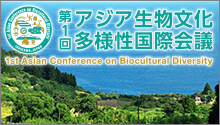2024/7/18
At Ishikawa Prefectural Nanao High School in Nanao City, students from both the humanities and science classes have collaborated on a “Fusion Project” to explore local issues and propose solutions, aiming to envision the future of their community.
The Noto Peninsula earthquake, which struck on January 1, 2024, recorded a seismic intensity of 6+ in Nanao City, resulting in collapsed buildings, prolonged water outages, and school closures, significantly impacting the lives of local high school students. This year’s third-year students have focused on the theme of “Recovery from the Noto Earthquake,” investigating various challenges brought by the earthquake and compiling a set of 30 proposals. A presentation event was held on July 18, where Researcher Koyama from the United Nations University participated as an advisor.
The students’ proposals included a wide range of ideas, such as building a disaster-resilient community, restoring local livelihoods, and expanding community connections. Here are a few specific examples:
– Canned Noto Beef Production: Aiming to raise awareness of Noto beef, this proposal suggests developing canned products that can also serve as a disaster preparedness resource.
– Event Planning for “My Hero Academia“: An event themed around the popular anime, designed to revitalize the community and attract tourists.
– Investigation of Water Pipe Damage Using Non-Destructive Tools: Leveraging modern technology to quickly assess damage to water pipes and support early restoration.
– Event Planning for Traditional Crafts and Food Culture: Organizing events that combine local traditional crafts with food culture to promote the region’s appeal.
– Introduction of Earthquake Resistance Stickers: Implementing stickers that indicate the seismic resilience of buildings to provide reassurance to tourists.
– Mental Health Support from School Counselors: Strengthening support systems for students in need of emotional care following the earthquake, facilitated by school counselors.
The presentation encompassed diverse perspectives, with many ideas inspired by lessons learned from efforts following the Great East Japan Earthquake. Additionally, several proposals aimed to promote not only Nanao City but the entire Noto region by selling local products at events, reflecting a broader vision for regional development. These initiatives are significant as they strive for comprehensive regional growth and showcased the unique creativity of high school students, including the incorporation of anime themes and the use of social media.
The proposals announced this time included many good ideas that would be great to see realized. However, since the third-year students will now be focusing on preparing for their entrance exams, it will be difficult for them to implement the proposals themselves. Therefore, it is necessary to establish a system for handing over the projects to younger students and to create opportunities for them to continue to be involved in the community even after they become university students.
As we advance the “Recovery of Noto,” it is crucial for youth, particularly high school students, to remain actively involved in shaping Noto’s future. It is also necessary to create mechanisms for reflecting the opinions of young people in decision-making processes. We will pay attention to how the proposals of high school students will impact the region and, as the United Nations University, we plan to continuously support the youth generation.





